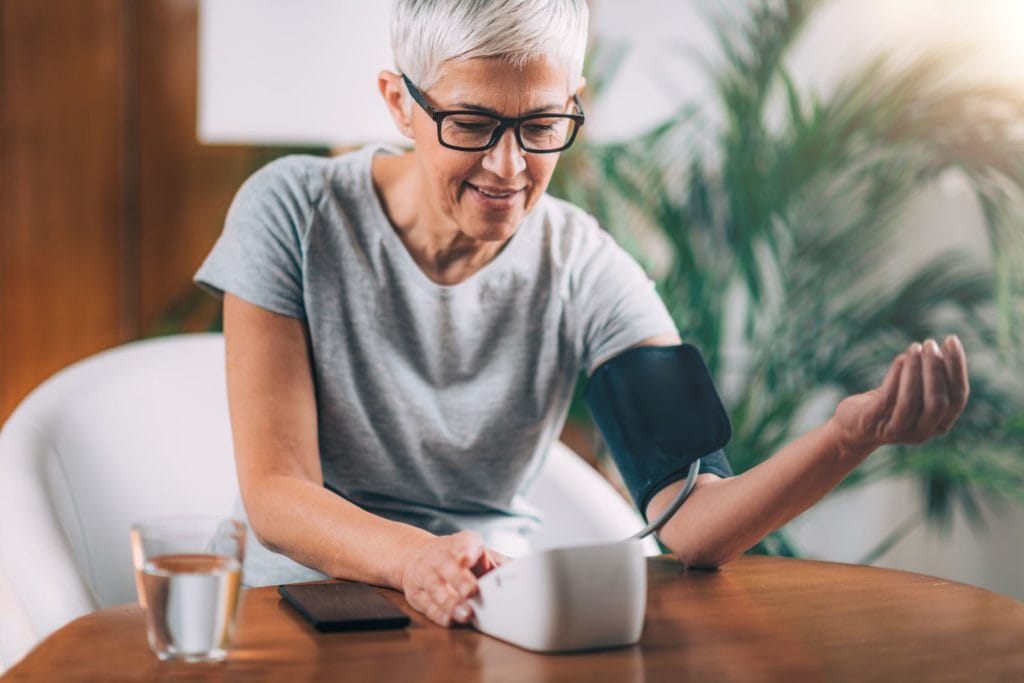Blood pressure monitor buying guide
Home blood pressure monitors offer an accessible and accurate way of measuring your blood pressure at home, outside the stressful environment of a doctor’s office.
Blood pressure monitors are essential for providing information to inform your physician. This information can lead to or confirm an accurate diagnosis, as well as keep you updated with your own blood pressure patterns so that you are able to stay informed of your own health. Even while taking readings at home, it’s still mandatory to consult a doctor for a diagnosis and management plan.
In this guide, we will look at the various factors to consider when buying a blood pressure monitor, the best blood pressure monitors for home use, the benefits of home blood pressure monitors, and the importance of accuracy in these devices.
What is a blood pressure monitor?

A blood pressure monitor (or sphygmomanometer) is a device that measures blood pressure through the use of a cuff worn on the arm or wrist. Many people are familiar with blood pressure monitors that use an inflatable arm cuff that can be pumped with a rubber bulb (manual) or electronically (digital).
Digital blood pressure monitor cuffs can be inflated automatically and measure blood pressure through oscillometric detection, meaning the device uses small pressure changes during deflation or inflation to calculate both systolic and diastolic blood pressure.
In recent years blood pressure technology has advanced significantly, with cuffless blood pressure monitors coming to the forefront for use on the wrist or finger. These cuffless technologies do not require inflation of a cuff to take a measurement and may use optical signals or other technologies to estimate blood pressure. Some of these take a spot check measurement at a single point in time. The Aktiia solution is the only currently available option on the market that can be worn on the wrist 24/7, and take your BP readings for you automatically on an hourly basis.
What are the benefits of a blood pressure monitor for home use?
While blood pressure monitoring is beneficial for everyone, a monitoring device is especially helpful to people who need to keep a close eye on their blood pressure such as:
- People with hypertension
- People with a family history of or at risk for developing hypertension
- People unable to visit their doctor regularly
By having a blood pressure monitor at home, this can save time, money, and worry for those who need to check their blood pressure at a moment’s notice. There is also evidence to suggest home monitoring can help with:
- Improved control of blood pressure
Diagnoses such as white-coat hypertension, masked hypertension, and other cardiovascular conditions
Stay informed about the latest advancements in blood pressure monitoring technology and take control of your health. Sign up for our newsletter now!
What to consider when buying a blood pressure monitor
With so many blood pressure monitors on the market, it can be challenging to find the best one for you. So here’s a list of factors to consider before you buy a BP monitor.
Arm cuffs or wrist bracelet?
Brachial blood pressure monitors are the traditional form of BP monitor. The name comes from the cuff wrapping around your brachial artery on your upper arm. However, arm cuffs can become uncomfortable when inflated and require some level of manual action to use them.
| Home BPM (Cuffs) | Aktiia | |
|---|---|---|
| FREQUENCY | 1+ times a day/week | 12+ times a day |
| DAY-TIME BP | ||
| NIGHT-TIME BP | ||
| MASKED HYPERTENSION | ||
| AUTOMATED MEASUREMENT |
Aktiia, however, offers more convenience and comfort and takes less effort. Once the bracelet is on, you can go about your day and not even notice it. Aktiia then calculates your blood pressure in the background up to every hour, offering you a much more detailed representation of your blood pressure.
| Home BPM (Cuffs) | Aktiia | |
|---|---|---|
| FREQUENCY | 1+ times a day/week | 12+ times a day |
| DAY-TIME BP | ||
| NIGHT-TIME BP | ||
| MASKED HYPERTENSION | ||
| AUTOMATED MEASUREMENT |
Accuracy
Accuracy is one of the most important factors when buying a blood pressure monitor. If you’re not having your BP taken by a doctor, you need to be sure your home device is as accurate as possible.
Aktiia’s blood pressure monitor has been clinically validated to meet ISO81060-2 standards and uses Optical Blood Pressure Monitoring (OBPM®) technology to analyse signals emitted at your wrist to analyse blood pressure. Aktiia’s clinical studies have been peer-reviewed and published in respected journals, including Blood Pressure Monitoring and Nature.
Read our Evidence page for more on Aktiia’s validated accuracy.
Cost
A good blood pressure monitor doesn’t need to be high cost. Try to balance the cost with the essential features you need in a blood pressure device, and the impact it will have on your lifestyle.
Which blood pressure monitor should you buy?
Whether you choose a wearable blood pressure monitor that offers a variety of additional features or a basic arm cuff monitor, it’s important to buy the device that fits your needs and lifestyle.
Ultimately, the best blood pressure monitor is:
- Accurate
- Comfortable to wear and use
- Cost-effective
- Easy to use
- Helps you manage your health
At Aktiia, we believe our device fits all these criteria with 24/7 blood pressure monitoring that helps you and your physician understand your blood pressure pattern so that you and your medical team can make an accurate diagnosis, and if you have hypertension, Aktiia allows for effective and easy monitoring and treatments, to reduce your overall cardiovascular risk. Have further questions about choosing a blood pressure monitor or the Aktiia bracelet itself? Visit our FAQ page or contact us with your inquiry.
Disclaimer: Disclaimer: If you are concerned about your blood pressure, it is best to speak to your doctor. They can advise on the best way to manage your blood pressure and whether using blood pressure Aktiia bracelet may be beneficial.
Sources:
Home Blood Pressure Monitoring, December 10, 2015 – https://www.ncbi.nlm.nih.gov/articles-PMC6159400
The Clinical Spectrum of Labile Hypertension, September 9, 2009 – https://onlinelibrary.wiley.com/doi-full-101111
Non-invasive sphygmomanometers – Clinical investigation of automated measurement type, May, 2013 – https://www.iso.org/standard-57977.html
Blood pressure from the optical Aktiia Bracelet, August, 2021 – https://journals.lww.com/bpmonitoring-Blood-pressure-from-the-optical-Aktiia-Bracelet



